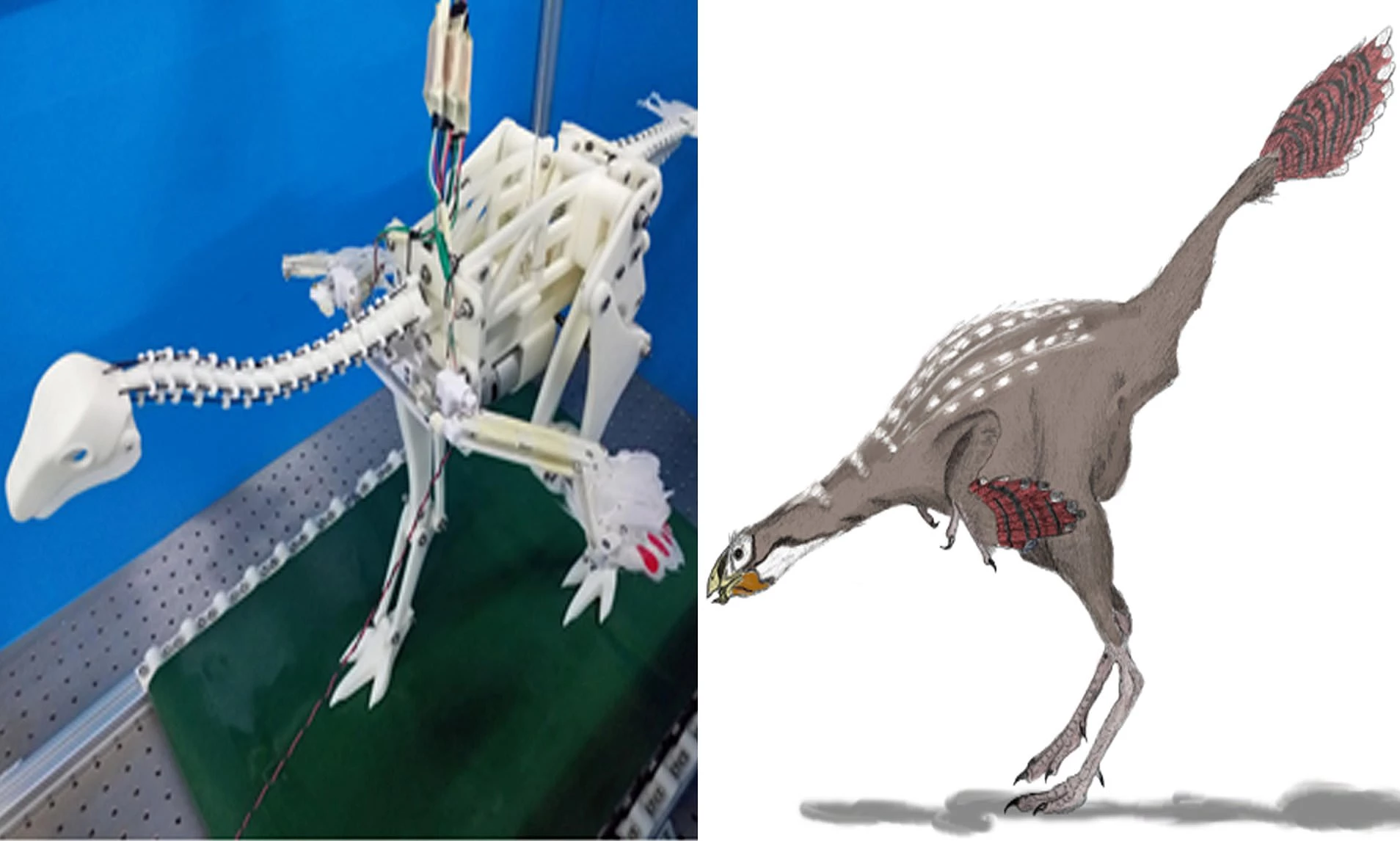Against a backdrop of looming skyscrapers, a robot dinosaur raises its feathery wings, sending its prey fleeing in terror.
No, it's not a city-stamping monster in a new B-movie, but a robot built by scientists to show how some dinosaurs could have flapped primitive wings to scare their quarry out of hiding, similar to birds like the roadrunner.
In this case, the metre-tall robo-dino's prey is a grasshopper, which responds by springing into a shrub.
The interaction was shown in a video released on Thursday alongside a study by researchers in South Korea.
Dinosaurs were long thought to be the leathery relatives of reptiles -- their name comes from the Greek for "terrible lizards".
But over the last three decades dinosaur fossils have been discovered with many different types of feathers, leading scientists to believe they are instead the ancestors of birds.
Many of these feathered dinosaurs could not fly, prompting a new mystery: If not to take flight, why did they evolve to have feathers in the first place?
A number of theories have been put forth, including that the feathers insulated the dinosaurs against the cold. Or maybe the feathers allowed dinosaurs to move more quickly to chase -- or pounce upon -- their prey.
Some small dinosaurs may have even used their feather-covered "proto-wings" to knock down and trap their prey "like an insect net," Piotr Jablonski, a biologist at Seoul National University and senior author of the new study, told AFP.
The team of researchers proposed adding a new predatory trick to this list, which they called the "flush-pursue strategy".
Under this theory, the dinosaurs flashed their wings to flush out their insect prey so they could catch them, a behaviour previously observed in modern roadrunners and mockingbirds.
- All hail the Robopteryx -
To demonstrate their hypothesis, the team built a robot version of the flightless dinosaur Caudipteryx, a peacock-sized pennaraptor with a feathered-covered tail and proto-wings which lived 124 million years ago.
The metal robot -- dubbed the "Robopteryx" -- was tasked with flapping its felt wings to scare-up some grasshoppers, whose ancestors in the Orthoptera order lived at the same time as the dinosaur.
"The grasshoppers more frequently escaped when the dinosaur displayed its proto-wings," said lead study author Jinseok Park, also from Seoul National University.
The grasshoppers were also more likely to hop away when the robot's wings were painted with contrasting black and white patches.
This corresponded with previous research which found that contrasting colours on the wings of birds are more likely to flush out insects.
The researchers also created computer animations of the Caudipteryx to test how the neurons of grasshoppers responded in the lab.
When the animation flashed its contrasting-colour wings, the grasshoppers' neurons were more likely to fire, triggering their escape reflex.
Birds are thought to have evolved contrasting patches on their wings that are just the right size to trigger these neurons.
This could mean that dinosaur evolution was partly "shaped by this tiny set of neurons in the brains of insects," Jablonski said.
Matthew Shawkey, an expert on bird and dinosaur feathers not involved in the study, said it was "exciting to see such creative research".
Shawkey told AFP he had never considered that the key "pennaceous" feathers of these dinosaurs "may have evolved in part to help scare up prey".
The study was published in the journal Scientific Reports.


